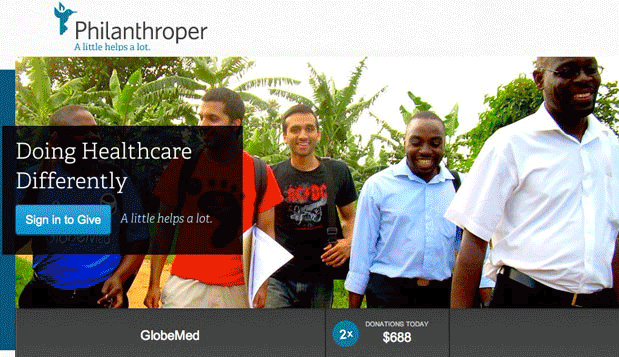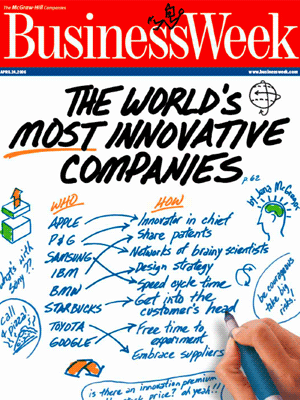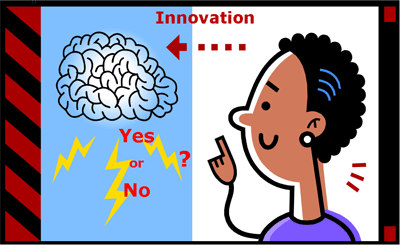Browse by Tag
- "Real" Innovation (2)
- Alignment (6)
- Business Innovation (9)
- Business Plan (2)
- Business Plans (1)
- Creativity (24)
- Critical Success Factors (4)
- Entrepreneurship (9)
- Global Competiveness (4)
- Human Side (11)
- India (1)
- Innovation (4)
- Innovation Consulting (18)
- Innovation Killers (3)
- Innovation Management (18)
- Innovation Tools (17)
- Innovation Training (24)
- Innovations (7)
- Inventions (16)
- IT Innovation (1)
- Leaders (5)
- Leadership (20)
- Leadership Development (13)
- Organizational Leadership (2)
- Organizational Strategy (20)
- Personal Values (6)
- Prediction (5)
- Strategic Innovation (38)
- strategic planning process (4)
- Strategy (3)
- Training (1)
- Vision (5)
- Weekly Dose (8)
Posts by Month
- 2014
- 2013
- 2012
- 2011
- 2010
- 2009
- 2008
- 2006
Innovation and Talent Management
Commitment to Innovation helps retain your top performers, attract new talent, and develop future business leaders.
Yes it is true, innovation is a powerful tool to help retain and attract the best talent. This has become a huge issue in fast growing economies such as India, Brazil, and China. Kalpana Kochar, Chief Economist of World Bank, recently said South Asia alone needs a million new jobs per month to keep up with economic growth (The Hindu, September 24, 2011). India alone created 800,000 jobs per month between 2000 and 2010; an incredible growth rate compared to “developed countries”. This is good news and bad news. In such a climate, companies experience very high flight-risk; employees are more likely to depart for better opportunities. The IT industry in India has an average attrition rate of 30%.
How do you differentiate in this market? One strategy is to create an environment of innovation and innovators. By instituting an innovation culture, organizations can learn to jump the ‘S-curves” faster – the only sustainable strategy for growth in today’s globalized world.
HR can have a greater impact on the business and be a valued contributor to the senior leadership team by facilitating a culture of innovation. The benefits include the following:
- Improve employee engagement and retention, resulting in less hiring and re-training cost
- Develop leaders of new businesses lines by grooming top performers and build your leadership bench
- Strengthen the company image as an innovator, attracting high quality talent
- Ensure the company’s future by avoiding being outmaneuvered by more nimble competitors
How are you helping to create an innovation culture at your company?
Innovation Inspiration From Nonprofits
7 Lessons From Innovative Nonprofit Campaigns
Nonprofit groups are experts at doing more with less, and that holds important lessons for corporate innovators. Groups such as GiveWell, DonorChoose.org and Charity: Water use innovative technologies, business models and marketing techniques to further their causes and spur supporters to action.

- Think small and simple when it comes to transmitting payments.
- Make your site fun, and think about using gamification to boost customer interaction.
- Crowd-sourcing funding can be an effective way to pay for a project.
- Video may very well be the future of the Web. Learn how to produce it, and you will be able to reach more people more effectively.
- Texting isn't just a way to chat with a friend they can be used in a variety of ways within your organization
- Know where your money goes and how it is spent.
- When your firm's offering isn't all that different from your competitors, attracting top-tier influencers to leverage your brand image can make all the difference.
Source: Inc.com
Family Pioneers Genome Research
What's the Latest Development?
A family of four in California is aiding genetic research by sequencing the genomes of each family member. Father and daughter John and Anne West were sequencing their own genomes from the family's home in Silicon Valley when a team of researchers from Stanford became interested in their project. "By examining the entire family's genome, the researchers were able to better investigate 'the interaction among genes and the development of disease,' said Frederick Dewey, the lead author of the new paper."
What's the Big Idea?
Researching the West family is part of the scientists' quest to extract truly useful information from the genome, a person's complete genetic code. To date, while prices for privately sequencing one's genome have fallen dramatically, crucial medical information gathered from the data has been slow to emerge. "For one thing, 'at this point, we are still not sure exactly what most genes predict about disease,' said Lynn Jorde of the University of Utah School of Medicine, a co-author of the earlier family paper."
Source: wsj.com
Global Crises is causing Ethical Banking - A story of Innovation
This is one of many such stories, where it takes a burning platform to wake up human beings. It seems that the Man takes things seriously only when he is about to perish. We as society, in general, seem to want to always live on the edge, the materialistic edge as opposed to ethical edge. It is sad to see that we only wake up when we are pushed to the corner.

Smart innovative executives have figured out how to take such insights and turn it into a new business model.
Best innovators have a unique ability to connect dots or see what others cannot easily see. They are extremely inquisitive, especially when systems are breaking down.
The banking system (along with many other systems such as education, political, etc.) are all breaking down and the Man is being pushed to the corner.
What can we learn? What can an innovator learn?
One solid example is the Tridos Bank of Netherlands. It has been around for 30 years with over 300,000 global clients. It is amongst five banks in Spain that is growing at an amazing pace to attract consumers that demands ethical investments and transparent and moral banking services.
Tridos and four other such banks in Spain, only invests in the real economy, finances projects related to sectors such as renewable energies and ecological agriculture, and holds social justice to be its own particular Bible.
Source: ELPAIS.com
The 4 Principles Of Delusional Economics
When it comes to economic theories, there is plenty of fascination in the business world around how to explain what drives business and purchasing activities. Behavioural economics, the field of economics concerned with examining why people behave the way they do when it comes to their purchasing behaviour, is hot right now. Bestselling books like Freakonomics and Predictably Irrational dig deep into the psyche of people to try and explain seemingly illogical actions.

Here are the four key principles of Delusional Economics, and how you might avoid applying them to your own small business:
1. Change a customer’s worldview
2. Getting people to pay for something that is currently free
3. Basing a business model on revenue from nonexistent advertisers or customers
4. Overestimating a customer’s ability to appreciate value worth paying a premium for
Source: OPEN Forum
Best Steve Jobs Quotes
Our first family business was selling computers with a retail front in Farmington, CT. My father and I bought a franchise called MicroAge(like Computerland). PCs were considered the commerce king and Apple was considered to be the hobby machine or for kids.
It took two decades to upturn that myth…in a way no one expected.
Today, Mr. Jobs has played a leadership role not just at Apple, but for just about everyone who has contributed to or participated in today’s connected economy. It’s not that he was smarter or more clever than many others. What he is very good at is always to bring out the best in some really talented people.
Best wishes to you Mr. Jobs and your family. Here are some of the best quotes below.
-------------------------------------------------------------
On Technology
“It takes these very simple-minded instructions—‘Go fetch a number, add it to this number, put the result there, perceive if it’s greater than this other number’––but executes them at a rate of, let’s say, 1,000,000 per second. At 1,000,000 per second, the results appear to be magic.” [Playboy, Feb. 1, 1985]
******
“The problem is I’m older now, I’m 40 years old, and this stuff doesn’t change the world. It really doesn’t.
“I’m sorry, it’s true. Having children really changes your view on these things. We’re born, we live for a brief instant, and we die. It’s been happening for a long time. Technology is not changing it much — if at all.
“These technologies can make life easier, can let us touch people we might not otherwise. You may have a child with a birth defect and be able to get in touch with other parents and support groups, get medical information, the latest experimental drugs. These things can profoundly influence life. I’m not downplaying that.
“But it’s a disservice to constantly put things in this radical new light — that it’s going to change everything. Things don’t have to change the world to be important.” [Wired, February 1996]
******
“I think it’s brought the world a lot closer together, and will continue to do that. There are downsides to everything; there are unintended consequences to everything. The most corrosive piece of technology that I’ve ever seen is called television — but then, again, television, at its best, is magnificent.” [Rolling Stone, Dec. 3, 2003]
On Design
“We think the Mac will sell zillions, but we didn’t build the Mac for anybody else. We built it for ourselves. We were the group of people who were going to judge whether it was great or not. We weren’t going to go out and do market research. We just wanted to build the best thing we could build.
When you’re a carpenter making a beautiful chest of drawers, you’re not going to use a piece of plywood on the back, even though it faces the wall and nobody will ever see it. You’ll know it’s there, so you’re going to use a beautiful piece of wood on the back. For you to sleep well at night, the aesthetic, the quality, has to be carried all the way through.” [Playboy, Feb. 1, 1985]
******
“Design is a funny word. Some people think design means how it looks. But of course, if you dig deeper, it’s really how it works. The design of the Mac wasn’t what it looked like, although that was part of it. Primarily, it was how it worked. To design something really well, you have to get it. You have to really grok what it’s all about. It takes a passionate commitment to really thoroughly understand something, chew it up, not just quickly swallow it. Most people don’t take the time to do that.
“Creativity is just connecting things. When you ask creative people how they did something, they feel a little guilty because they didn’t really do it, they just saw something. It seemed obvious to them after a while. That’s because they were able to connect experiences they’ve had and synthesize new things. And the reason they were able to do that was that they’ve had more experiences or they have thought more about their experiences than other people.
“Unfortunately, that’s too rare a commodity. A lot of people in our industry haven’t had very diverse experiences. So they don’t have enough dots to connect, and they end up with very linear solutions without a broad perspective on the problem. The broader one’s understanding of the human experience, the better design we will have. [Wired, February 1996]
******
“For something this complicated, it’s really hard to design products by focus groups. A lot of times, people don’t know what they want until you show it to them.”
“That’s been one of my mantras — focus and simplicity. Simple can be harder than complex: You have to work hard to get your thinking clean to make it simple. But it’s worth it in the end because once you get there, you can move mountains.” [BusinessWeek, May 25, 1998, in a profile that also included the following gem: "Steve clearly has done an incredible job," says former Apple Chief Financial Officer Joseph Graziano. "But the $64,000 question is: Will Apple ever resume growth?"]
******
“This is what customers pay us for–to sweat all these details so it’s easy and pleasant for them to use our computers. We’re supposed to be really good at this. That doesn’t mean we don’t listen to customers, but it’s hard for them to tell you what they want when they’ve never seen anything remotely like it. Take desktop video editing. I never got one request from someone who wanted to edit movies on his computer. Yet now that people see it, they say, ‘Oh my God, that’s great!’” [Fortune, January 24 2000]
******
“Look at the design of a lot of consumer products — they’re really complicated surfaces. We tried to make something much more holistic and simple. When you first start off trying to solve a problem, the first solutions you come up with are very complex, and most people stop there. But if you keep going, and live with the problem and peel more layers of the onion off, you can often times arrive at some very elegant and simple solutions. Most people just don’t put in the time or energy to get there. We believe that customers are smart, and want objects which are well thought through.” [MSNBC and Newsweek interview, Oct. 14, 2006]
On His Products
“I don’t think I’ve ever worked so hard on something, but working on Macintosh was the neatest experience of my life. Almost everyone who worked on it will say that. None of us wanted to release it at the end. It was as though we knew that once it was out of our hands, it wouldn’t be ours anymore. When we finally presented it at the shareholders’ meeting, everyone in the auditorium gave it a five-minute ovation. What was incredible to me was that I could see the Mac team in the first few rows. It was as though none of us could believe we’d actually finished it. Everyone started crying.” [Playboy, Feb. 1, 1985]
******
“We made the buttons on the screen look so good you’ll want to lick them.” [On Mac OS X, Fortune, Jan. 24, 2000]
******
“It will go down in history as a turning point for the music industry. This is landmark stuff. I can’t overestimate it!” [On the iTunes Music Store, Fortune, May 12, 2003]
On Business
“You know, my main reaction to this money thing is that it’s humorous, all the attention to it, because it’s hardly the most insightful or valuable thing that’s happened to me.” [Playboy, Feb. 1, 1985]
******
“Being the richest man in the cemetery doesn’t matter to me … Going to bed at night saying we’ve done something wonderful… that’s what matters to me.” [The Wall Street Journal, May 25, 1993]
******
“Innovation has nothing to do with how many R&D dollars you have. When Apple came up with the Mac, IBM was spending at least 100 times more on R&D. It’s not about money. It’s about the people you have, how you’re led, and how much you get it.” [Fortune, Nov. 9, 1998]
******
“The cure for Apple is not cost-cutting. The cure for Apple is to innovate its way out of its current predicament.” [Apple Confidential: The Real Story of Apple Computer Inc., May 1999]
On System and Process
The system is that there is no system. That doesn’t mean we don’t have process. Apple is a very disciplined company, and we have great processes. But that’s not what it’s about. Process makes you more efficient.
“But innovation comes from people meeting up in the hallways or calling each other at 10:30 at night with a new idea, or because they realized something that shoots holes in how we’ve been thinking about a problem. It’s ad hoc meetings of six people called by someone who thinks he has figured out the coolest new thing ever and who wants to know what other people think of his idea.
“And it comes from saying no to 1,000 things to make sure we don’t get on the wrong track or try to do too much. We’re always thinking about new markets we could enter, but it’s only by saying no that you can concentrate on the things that are really important. [BusinessWeek, Oct. 12, 2004]
Read more at: http://blogs.wsj.com/digits/2011/08/24/steve-jobss-best-quotes/
How P&G uses Innovation to underpin its marketing?
P&G is certainly a marketing powerhouse. It just announced that it would raise its already record-setting global ad spending by another $700 million to total $9.3 billion by next summer. If ever there were a full-employment act for marketers, P&G would be its patron saint.
What's it got to tell the world that's so important?

Enter innovation. New products that address new needs, and old products that address old ones in new ways. P&G has been innovating since the early 20th century, like when its researchers set out to replace the flaky performance of laundry detergent and discovered synthetic surfactants. Named Tide, the company kept improving its formulation every year after introducing it in 1946, and invented a new social marketing medium -- "soap operas" on TV -- to promote it, wrapping its marketing with guilty-pleasure characters and weekly cliffhanger endings. The stuff was dumb. It made the Old Spice YouTube campaigns look like Kurosawa. Read more
Source: Advertising Age By: Jonathan Salem Baskin
8 Ways Entrepreneurs Should Be Networking Right Now
Entrepreneurs like to spend their time thinking about new products and their grandiose vision. But though these are key drivers for any startup, there's another task that's of the utmost importance: networking.

1. Be active on social media
2. Get on a niche social network
3. Attend industry events
4. Keep your elevator pitch primed and polished
5. Get referrals, and trade contacts with others
6. Be reachable 24/7
7. Always follow up
8. Cultivate every relationship
Source: Open Forum
Universal flu shot on the horizon, eliminating need for annual shots
Universal Flu Vaccine Almost Ready
“Universal” flu shot is not too far off. Scientists are close to developing a vaccine that would treat all different strains of the flu, making annual flu shots unnecessary.

Flu viruses are able to mutate rapidly in response to new vaccinations, something that has forced doctors to develop new treatments for every flu season. But Dr. Francis Collins, head of the National Institutes of Health, told USA Today that he was "guardedly optimistic" about the prospects of developing an all-encompassing vaccine within the next five years. Read more
Source: IBTimes - Health
Being Open to Creativity and New Possibilities
Why doesn’t innovation and right-brain thinking is not welcomed in the work world?
Because we don’t promote and do not understand that we must know that we don't know all that we need to know. Therefore, why would you ever want to say no to something that will show you the way to grow.

In other words, experiment, persist, don't give up, and learn to fail fast. And when down on your knees, you will now know what works and what doesn’t work to move forward.
Life is too short to being relegated to the world of 'no'.
Be home at ‘yes’. Be a visitor at the home of ‘no’.

